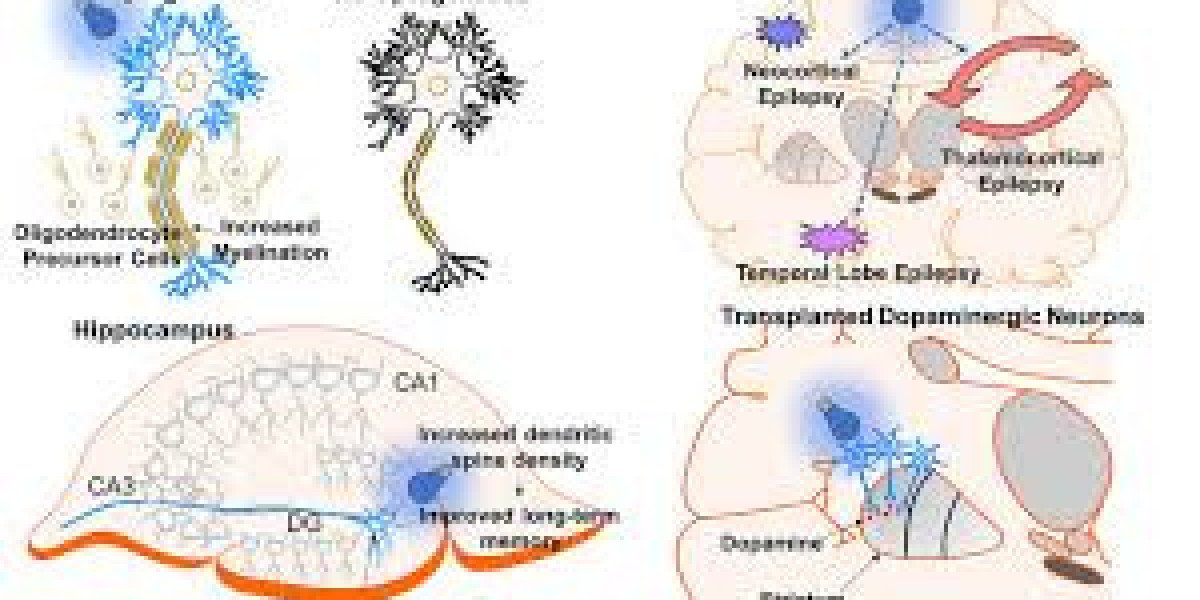Optogenetics, a technique that uses light to control cells within living tissue, has rapidly evolved into one of the most powerful tools in neuroscience, enabling precise manipulation of cellular activity in both animals and, more recently, humans. Initially developed in the early 2000s, optogenetics was largely confined to research on non-human subjects, particularly in model organisms like mice and rats. However, in recent years, advances in technology and methodologies have made it possible to apply optogenetics in human studies. This article explores the principles of optogenetics, its applications in neuroscience and medicine, and its potential for transforming our understanding of the brain and treating various neurological disorders.
What is Optogenetics?
Optogenetics is a method that involves the use of light to control genetically modified cells, typically neurons, that express light-sensitive proteins. These proteins, called opsins, are introduced into specific cells or tissues in the body through genetic modification, viral vectors, or other methods. When exposed to specific wavelengths of light, these opsins activate or inhibit the targeted cells, enabling researchers to precisely control the activity of those cells.
The power of optogenetics lies in its ability to manipulate neuronal circuits with unprecedented precision in both time and space. Unlike traditional techniques such as electrical stimulation, which can affect large groups of neurons, optogenetics allows for the selective activation or inhibition of individual neurons or even specific subtypes of neurons within a given region of the brain.
The Mechanisms Behind Optogenetics
Optogenetics relies on the use of opsins, light-sensitive proteins that originate from a variety of organisms, including bacteria, algae, and plants. The two most commonly used opsins are:
- Channelrhodopsin: A protein that, when exposed to blue light, allows positive ions to flow into the cell, leading to depolarization and activation of the neuron. Channelrhodopsin is typically used to stimulate neuronal activity.
- Halorhodopsin: A protein that, when exposed to yellow or green light, causes chloride ions to flow into the cell, leading to hyperpolarization and inhibition of the neuron.
Once these opsins are incorporated into the target cells, a researcher can use an external light source, such as an optical fiber or implantable LED, to deliver precise light pulses to specific brain regions or other tissues. The ability to control neural activity in real-time with high temporal precision has made optogenetics an invaluable tool in both basic neuroscience research and potential clinical applications.
Applications in Neuroscience
Optogenetics has transformed the study of brain function by allowing researchers to manipulate neural circuits with incredible specificity. By activating or inhibiting specific populations of neurons, scientists can dissect the role of different brain regions and networks in behaviors, cognition, emotions, and even diseases.
Mapping Brain Circuits: One of the most significant applications of optogenetics in neuroscience is the ability to map brain circuits in real-time. Researchers can stimulate or silence specific neuronal populations in order to observe changes in behavior, revealing the connections between different brain regions and how they contribute to various functions, from motor control to decision-making.
Studying Neuroplasticity: Neuroplasticity refers to the brain's ability to reorganize itself by forming new neural connections. Optogenetics allows researchers to induce and monitor changes in neural activity that are associated with neuroplasticity, providing insight into how the brain adapts in response to experiences, learning, or injury.
Understanding Neurological Diseases: Many neurological diseases, such as Parkinson’s disease, epilepsy, and depression, are characterized by abnormal neural activity. By using optogenetics, scientists can study the underlying mechanisms of these disorders at a cellular level. For example, in Parkinson’s disease, optogenetics has been used to modulate the activity of specific brain regions involved in motor control, offering new avenues for understanding and potentially treating the disease.
Clinical Applications in Humans
While optogenetics was initially restricted to animal models, advances in gene therapy and other techniques have made it increasingly feasible to apply optogenetics in human clinical settings. The potential applications of optogenetics in human medicine are vast, ranging from treating neurological and psychiatric disorders to advancing prosthetic technologies.
Restoring Vision: One of the most exciting clinical applications of optogenetics is the potential to restore vision in individuals who are blind due to retinal degenerative diseases, such as retinitis pigmentosa. Researchers have developed optogenetic approaches to reintroduce light-sensitive proteins into the retinal cells of patients, enabling them to perceive light and even recognize shapes. Clinical trials are already underway, and while challenges remain, the prospect of restoring vision through optogenetics is one of the most promising frontiers in regenerative medicine.
Treating Parkinson’s Disease: Parkinson’s disease is a neurodegenerative disorder characterized by the loss of dopamine-producing neurons, leading to motor dysfunction and other symptoms. Optogenetic techniques have been used in animal models of Parkinson’s disease to restore balance and motor control by modulating activity in specific brain regions such as the basal ganglia. Although the clinical translation of optogenetics to human patients is still in its infancy, this approach holds great promise as a more targeted and effective treatment for Parkinson’s compared to current therapies like deep brain stimulation.
Epilepsy Treatment: Epilepsy is a neurological disorder characterized by recurrent seizures due to abnormal neuronal firing. By using optogenetics to inhibit hyperactive neural circuits, researchers have demonstrated the ability to suppress seizures in animal models. Translating this approach to human patients could lead to more effective treatments for epilepsy, especially in cases where traditional medications are ineffective or cause significant side effects.
Neurodegenerative Diseases and Mental Health: Optogenetics also has the potential to treat other neurodegenerative diseases, such as Alzheimer’s disease, and mental health disorders like depression and anxiety. By selectively modulating brain circuits involved in mood regulation, researchers could develop more precise and targeted treatments for these conditions, offering alternatives to current medications that often have broad, non-specific effects and significant side effects.
Brain-Computer Interfaces (BCIs): Another potential application of optogenetics in humans is the development of advanced brain-computer interfaces. By combining optogenetics with BCIs, researchers could create more effective prosthetic devices or even restore lost sensory or motor functions in individuals with paralysis or limb loss. For example, optogenetic stimulation could enable patients to control robotic limbs or communicate through brain signals, bypassing damaged neural pathways.
Ethical and Safety Considerations
While the potential benefits of optogenetics are enormous, there are several ethical and safety considerations that must be addressed as the technology moves towards clinical applications in humans.
Long-Term Effects: One of the primary concerns with optogenetics is the long-term safety of introducing genetically modified cells or proteins into the human body. While optogenetic techniques have been extensively tested in animal models, their long-term effects in humans remain uncertain. Potential risks include immune responses to the introduced proteins, unintentional activation of cells, or the development of unwanted side effects.
Ethical Concerns about Neural Manipulation: The ability to manipulate brain function with such precision raises ethical questions regarding the potential for misuse or unintended consequences. In the future, optogenetics could be used not only to treat diseases but also to enhance human cognitive or emotional states. This raises concerns about the ethics of "mind control" or the possibility of altering fundamental aspects of a person's personality or identity.
Access and Equity: As optogenetics becomes more advanced, ensuring equitable access to these therapies will be crucial. Advanced gene therapies and optogenetic treatments may be expensive and require specialized infrastructure, potentially creating disparities in who can benefit from these advancements. Ensuring that these technologies are accessible to all patients, regardless of socioeconomic status, will be a key challenge.
Conclusion
Optogenetics has already revolutionized our understanding of the brain and its underlying neural circuits. With its ability to manipulate specific neuronal populations with high temporal and spatial precision, optogenetics holds the potential to transform neuroscience research and clinical medicine. From restoring vision in the blind to treating complex neurological diseases like Parkinson’s and epilepsy, the clinical applications of optogenetics in humans are vast and promising. However, as with any new technology, challenges remain in terms of safety, ethics, and accessibility.
As research continues to advance, it is likely that optogenetics will play an increasingly important role in shaping the future of medicine, offering new hope for patients with currently untreatable conditions and deepening our understanding of the brain's complexities. In the coming decades, optogenetics could very well become a cornerstone of precision medicine, offering highly targeted and effective therapies for a range of neurological and psychiatric disorders.








